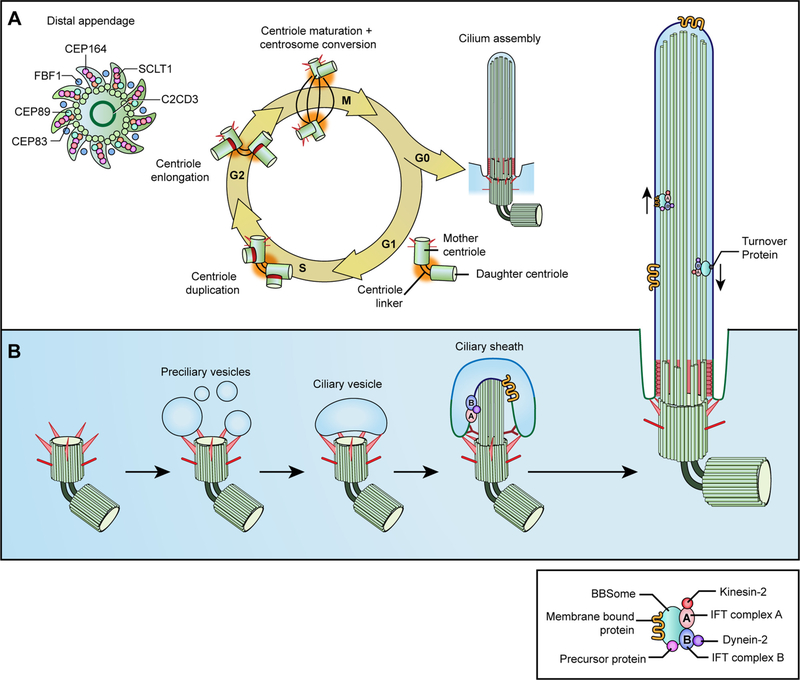Fig. 2.
Centriole and cilium biogenesis. (A) Regulation of centriole biogenesis during the cell cycle. In the G1/S phase of proliferating cells, assembly of new centrioles are initiated on both the mother centriole and the daughter centriole, creating two mother-daughter centriole pairs. The newly formed centrioles elongate throughout the G2 phase. In the late G2 phase, the daughter centriole from the previous cell cycle acquires distal appendages and subdistal appendages by sequential recruitment of their structural components. Subdistal appendages anchor microtubules and facilitate the formation of the pericentriolar material. To initiate the M phase, the two pairs of centrosomes separate, migrate to the opposite poles of the cells and establish bipolar spindles. Upon exit from cell cycle, the mother centriole docks to the plasma membrane by distal appendages for cilium assembly in response to specific developmental and/or environmental signals. (B) Intracellular pathway of cilium biogenesis. Ciliogenesis is initiated by docking of preciliary vesicles from the Golgi apparatus and recycling endosomes to distal appendages. These vesicles subsequently merge to form a large ciliary vesicle containing machineries for the maturation of the mother centriole and the trafficking of nascent cilia. Upon CP110 removal, the intraflagellar transport (IFT) complexes (IFT-A, pink oval and IFT-B, blue oval) and motor proteins (kinesin-2 motors, red ball and dynein-2 motors, purple ball) are recruited to distal appendages. The transition zone emerges shortly after the recruitment of IFT machineries and is characteristic of the Y-links. The ciliary axoneme elongates and the ciliary membrane extends with the transport of ciliary proteins and building blocks, forming the ciliary sheath. Fusion of the ciliary sheath with the plasma membrane exposes the primary cilia to the external environment.

